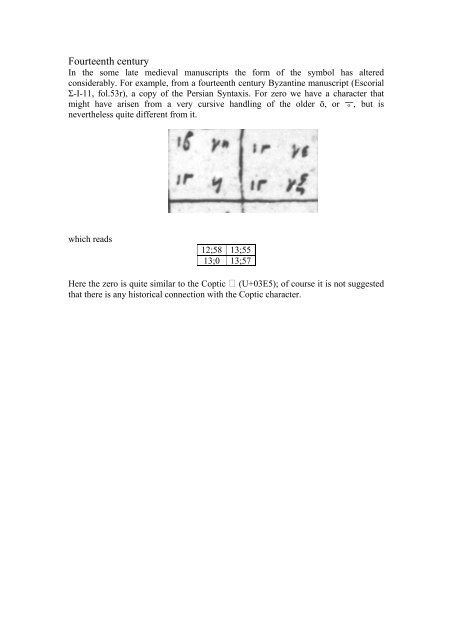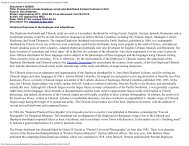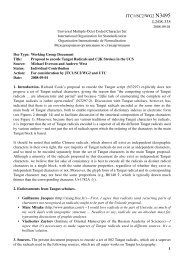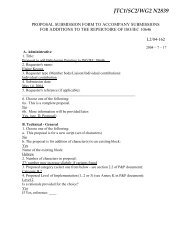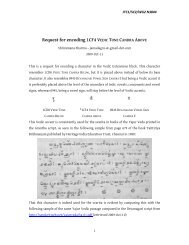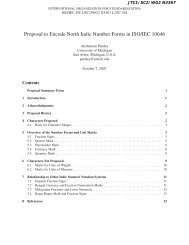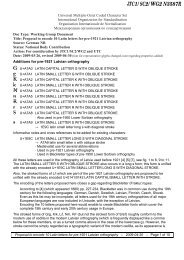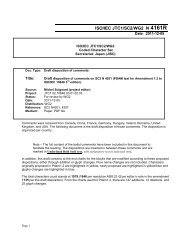ISO/IEC JTC1/SC2 WG2 N2708 - DKUUG standardizing
ISO/IEC JTC1/SC2 WG2 N2708 - DKUUG standardizing
ISO/IEC JTC1/SC2 WG2 N2708 - DKUUG standardizing
You also want an ePaper? Increase the reach of your titles
YUMPU automatically turns print PDFs into web optimized ePapers that Google loves.
Fourteenth century<br />
In the some late medieval manuscripts the form of the symbol has altered<br />
considerably. For example, from a fourteenth century Byzantine manuscript (Escorial<br />
Σ-I-11, fol.53r), a copy of the Persian Syntaxis. For zero we have a character that<br />
might have arisen from a very cursive handling of the older ō, or ϙ, but is<br />
nevertheless quite different from it.<br />
which reads<br />
12;58 13;55<br />
13;0 13;57<br />
Here the zero is quite similar to the Coptic (U+03E5); of course it is not suggested<br />
that there is any historical connection with the Coptic character.


